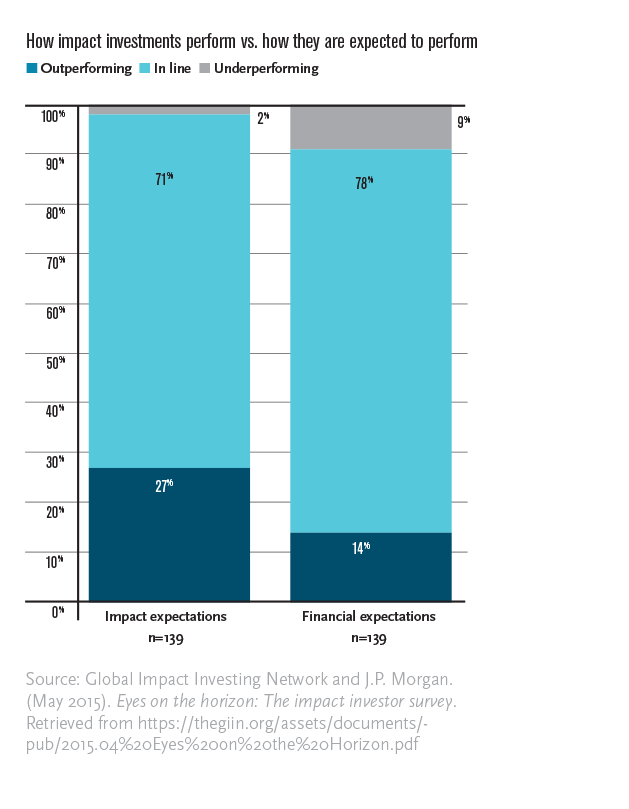Impact investing is an emerging area that companies are beginning to add to their philanthropic portfolios. The definition of impact investing is twofold: fund a worthy social cause to provide value to the community while returning financial value to the investor.
A new notice put out by the IRS in September makes this a particularly favorable time for companies to begin operationalizing the task of impact investing. The 2015 IRS report, “Investing Made for Charitable Purposes,” affirmed the private foundation’s right and ability to invest in a way that advances their charitable goals, even if the expected rates of return on those investments may be less than other possible investment options.
Sacrificing financial gains is not a requirement, however. In fact, it’s not even likely. A 2015 study by Global Impact Investing Network (GIIN) and JP Morgan points to the positive performance of impact investments, and found that in fact these investments meet expectations or outperform non-impact investments in both financial and social returns more than 90 percent of the time.[1] Organizations clearly recognize the benefits; the same report also estimated that global impact investments exceeded $50 billion in 2010 and predicts that invested capital in the impact investing market could reach $400 billion to $1 trillion by 2020.[2]
 Impact investing can be done in many ways. One of the most common is called Program-Related Investments (PRIs), or investments that involve the potential return of capital. PRIs may involve giving a low rate loan to a nonprofit to build a new facility, funding a company that researches drugs for diseases affecting the most poor and vulnerable in developing countries, or lending money to an organization so they can make the capital improvements necessary to deliver their services. Impact investing can also occur in the form of Market-Rate Investments (MRIs) or investing in companies that work toward solving a variety of social issues, such as companies that build affordable housing, work toward health solutions, or develop clean energy. Additional choices are to include positive or negative screens in making all investment decisions— either focusing investments on positive outcomes, or moving away from investments that run counter to the overall mission of the organization.
Impact investing can be done in many ways. One of the most common is called Program-Related Investments (PRIs), or investments that involve the potential return of capital. PRIs may involve giving a low rate loan to a nonprofit to build a new facility, funding a company that researches drugs for diseases affecting the most poor and vulnerable in developing countries, or lending money to an organization so they can make the capital improvements necessary to deliver their services. Impact investing can also occur in the form of Market-Rate Investments (MRIs) or investing in companies that work toward solving a variety of social issues, such as companies that build affordable housing, work toward health solutions, or develop clean energy. Additional choices are to include positive or negative screens in making all investment decisions— either focusing investments on positive outcomes, or moving away from investments that run counter to the overall mission of the organization.
The bottom line is that financially sound investing strategies and creating positive social impact can be complementary. Accomplishing both can allow companies to simultaneously maintain financial health and solve complex social problems.
[1] Global Impact Investing Network and J.P. Morgan. (May 2015). Eyes on the horizon: The impact investor survey. Retrieved from https://thegiin.org/assets/documents/pub/2015.04%20Eyes%20on%20the%20Horizon.pdf [2] Global Impact Investing Network and J.P. Morgan. (May 2015).